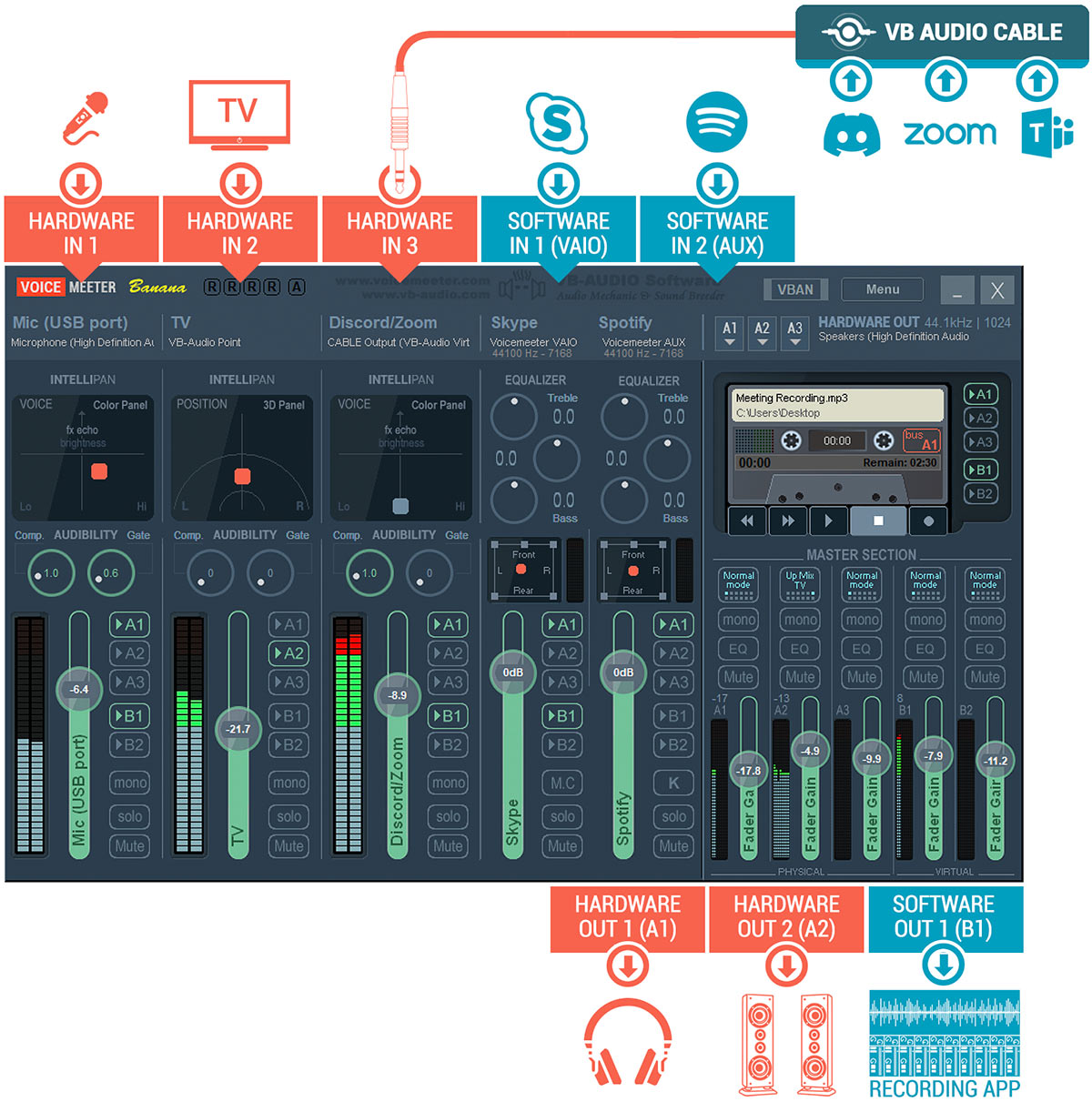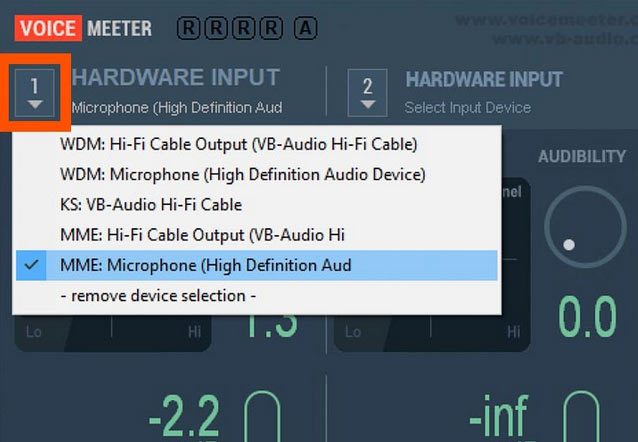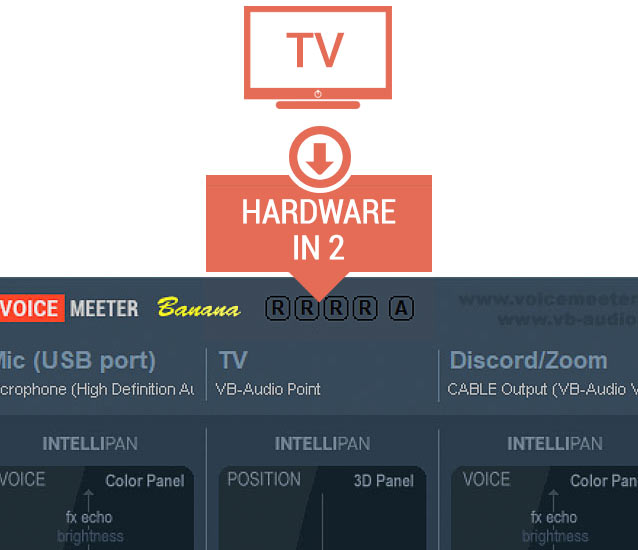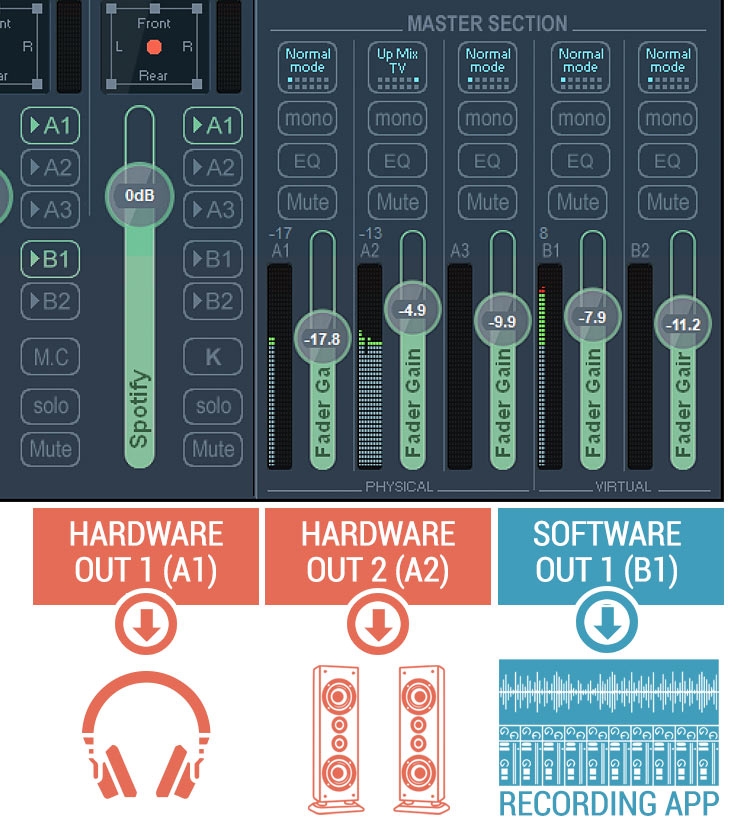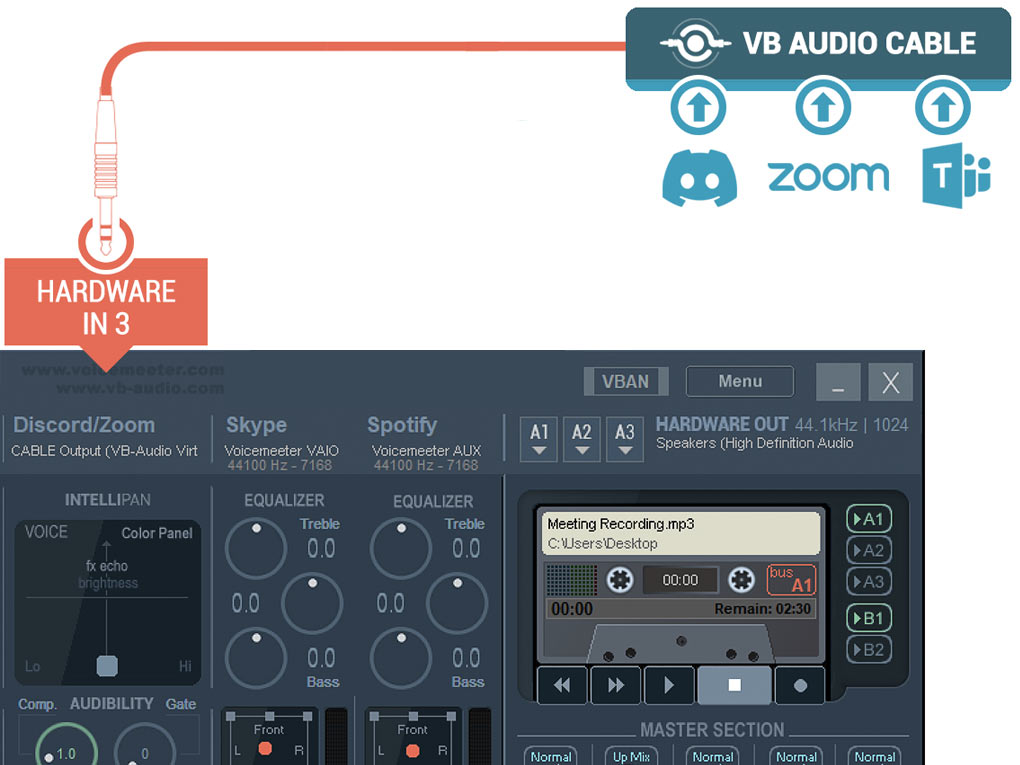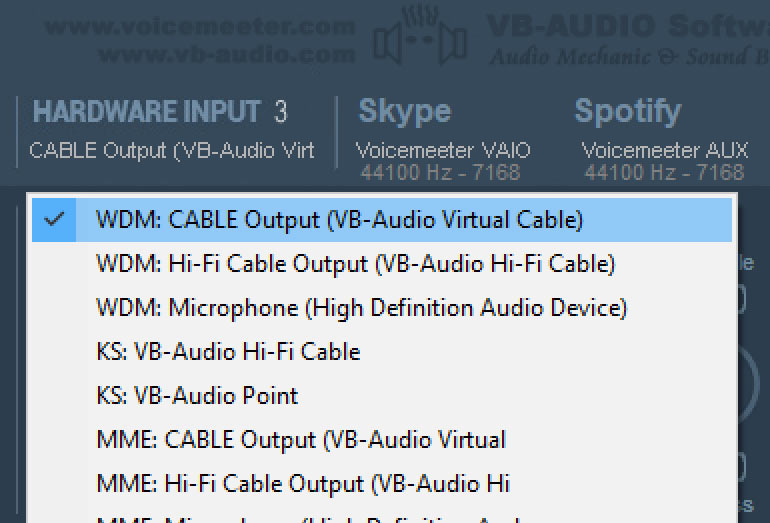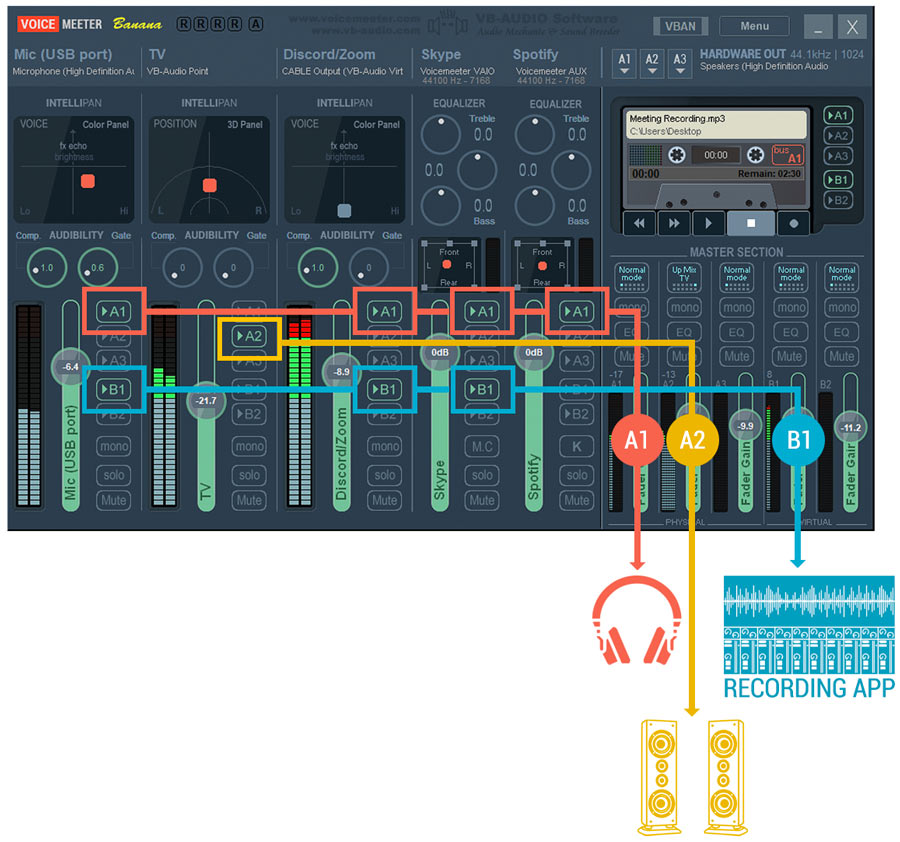Use VoiceMeeter
with VB Audio Cable
for Skype, Zoom or Discord
Use VoiceMeeter
with VB Audio Cable
for Skype, Zoom or Discord
Learn how to
1. Use VB Audio Cable to connect your conferencing apps to VoiceMeeter´s hardware input. This way you get a dedicated input for one or several selected applications. You can set a different volume or use IntelliPan and Audibility to improve the sounds.
2. Split your different signals/sources to different outputs (Headphones, Speakers, software apps).
THE SETUP
The Guide will explain how to create this setup with VoiceMeeter Banana:
- Mic, external audio (TV) on the Hardware Ins 1/2.
- Conferencing apps with VB Audio Cable on Hardware In 3.
- All other Windows apps on both software inputs of VoiceMeeter (VAIO + AUX).
- Headphones and Speakers on Hardware Outs A1/A2.
- Recording selected audio channels on Software Out B1.
All elements are flexible, so you can change to other apps.
1
SETUP YOUR HARDWARE DEVICES
Connect and manage your Microphone, Headset, Speakers and other external audio devices.
1.Select the device driver of your microphone from the input menu of Hardware Input 1.
Speak and check the microphone signal on the peak meter of your selected input strip.
This way you can listen to movie sounds on your computer headphones or speakers. You can even use VoiceMeeter´s UpMix Bus mode to create Surround sound from the TV stereo signal (learn more).
Optionally or additionally you can of course use any external audio device on the physical hardware input #2.
3.Assign your headphones to output A1 (WDM or MME driver – usually WDM provides a lower latency). Assign your speakers to output A2. Maybe assign small table speakers to output A3.
Why do you need different outputs?
Usually you want to listen to a Online conference on your headphones, so your Microphone does not pick up the sound of your Skype contact and play it back to him or create feedback loop. This can happen, if Skype/Zoom or Discord sound is played on your speakers.
At the same time you want to use different volume levels or effects (e.g. Surround UpMix) on your headphones and speakers.
![]()
Your Mic or other audio hardware comes with its own driver(s). Select a WDM driver for the best latency and audio performance. A MME driver works too, but this format usually introduces more latency. Use an MME driver only if a WDM driver is not present or does not work correctly with your hardware configuration (e. g. crackles).
2
CONNECT ONE OR MORE APPS
VIA VB AUDIO CABLE
TO A HARDWARE INPUT
Use VB Audio Cable to route selected apps to VoiceMeeter’s Hardware Input 3.
Why use a hardware input besides the
VoiceMeeter software inputs (VAIO + AUX)?
You can use a free harware input to get an additional channel for selected apps with the integrated effects (IntelliPan, Compressor and Gate). In most use cases you need your most used conferencing app on a dedicated channel to mute or solo it. Of course it works for your prefered music app or video player.
This way, it is possible to further split these signals for playing on Headphones/Speakers, mute them from your mix or record them at the same time in another app. Every sound its own channel!
To connect Windows apps to a VoiceMeeter hardware input, you need to install VB Audio Cable.
Afterwards VB Cable shows up as a Windows audio device. Use this device to route selected apps to VoiceMeeter’s hardware input 3.
All other Windows apps play into the software inputs VAIO + AUX.
VB Cable works like an audio cable in the real world – the audio of selected apps, like Zoom or Skype goes to the input of VB Audio Cable, which is “plugged” into one of the hardware inputs of VoiceMeeter.
1.Route your apps:
Choose VB Audio Cable Input as audio device in every app, which should play on Hardware Input 3 of VoiceMeeter. (e.g. Zoom, Teams, Skype).
2.Select VB Cable Output on Hardware Input 3 of VoiceMeeter. Use the WDM driver version of VB Cable for the best performance. That´s it.
![]()
VB Audio Cable is a so called Multi-client audio driver. This means you can assign several programs to the same VB Cable input.
Use VoiceMeeter’s additional software input (AUX) for other Windows sounds, which you want to split from all other audio sources. For example, choose Spotify to play music on a dedicated VoiceMeeter channel strip (Software Input 2 = VoiceMeeter AUX).
3
ROUTE YOUR INPUTS TO BUSES.
RECORD THEM IN A SOFTWARE
Manage and separate your Microphone, TV and conferencing apps.
1.Now you can simply press button A1 (assigned to Output A1 = Headphones) on any channel to listen to the signals on your Headphones. Press button A2 to on any channel to listen to the signals on your speakers. This way, you can simply split signals to different destinations or even listen to them on several outputs.
2.Assign one of the virtual outputs (B1) of VoiceMeeter to your recording program (e.g. Audacity). Now you can play and record all inputs to Audacity by pressing the Button B1 in their channels. Your Mic on Hardware input 1, your TV sound on Hardware input 2, Skype/Discord on Hardware input 3, were all recorded at the same time in your recording software.

